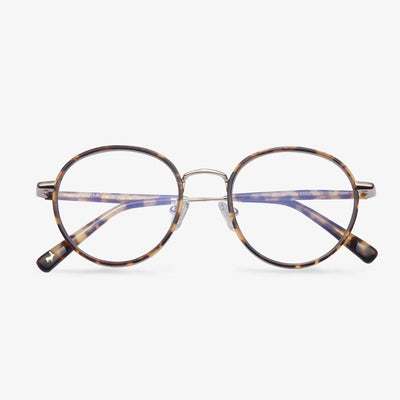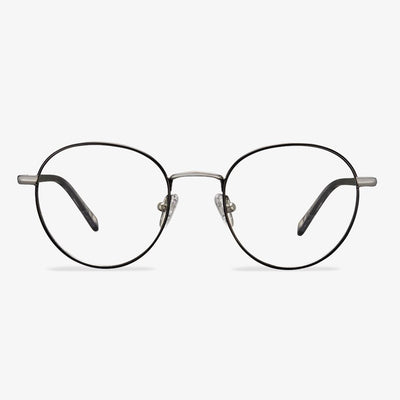Advantages of progressive lenses
1. The appearance of the lens is like a single vision lens, and the dividing line of the degree change cannot be seen. Not only is the appearance beautiful, but more importantly, it protects the age privacy of the wearer. There is no need to worry about leaking the age secret due to wearing glasses.(https://www.koalaeye.com/collections/progressive-glasses)
2. Since the change of lens power is gradual, there will be no image jump. It is comfortable to wear and easy to adapt.
3. Because the degree is gradual, the replacement of the adjustment effect is gradually increased according to the shortening of the short distance. There is no adjustment fluctuation, and it is not easy to cause visual fatigue.
4. Clear vision can be obtained at all distances in the visual range. A pair of glasses meet the use of long-distance, near use, and various distances in between. It is especially good for teachers, doctors, music workers, and computer operators because these people not only need to see far and near objects clearly, but most of the time they also need to be able to see objects at intermediate distances such as blackboards, piano scores, and computer screens. This is not possible with lenses other than progressive lenses.
5. At present, both internal and external ophthalmologists agree that young people should wear low-degree convex lenses when reading and writing to reduce near-use adjustment, thereby alleviating or preventing the occurrence and development of myopia. This gives the progressive multifocal lens a new meaning and mission. Physiology found that excessive use of the eyeball adjustment function can form 'accommodative spasm' or pseudo myopia. Continued development can produce longitudinal eye axis elongation and induce 'true myopia' or axial myopia. The external luminosity of the progressive lens can be artificially added to the progressive luminosity. The upper is used for looking far, and the below is used for looking near, which makes the eyeball relax and over-adjust. The ever-changing luminosity of the lens replaces the 'accommodative power' that should have been activated, blocking the vicious circle of adjusting the eye axis elongation, making the eye not easy to fatigue, and slowing the development of myopia.
Eyemart Express
Eyemart Express is founded in 1990. The focus is to get you the right glasses at the right price. Eyemart Express is the only retailer with a lens lab in every store that can produce 90% of its glasses on the same day. There are more than 2,000 frames to choose from, including designer brands and safety glasses. At their online store, you can buy prescription glasses anywhere and have them delivered to your door. You can choose the best glasses at the right price and enjoy same-day service.
What Are Transition Lenses?
Transition lenses, also called photochromic glasses are eyeglasses lenses that change their colors with light. The transition lenses darken in the sunlight and lighten in the softer light or the dark. These transition lenses provide the convenience of sunglasses without having to wear them over your prescription glasses and having to constantly switch between the two.
But there are some common transition lenses problems. So, we will list some of them. Are transition lenses worth it? After reading this post, you will find them.
What Is Anti Reflective Coating?
Anti reflective coating, also known as AR, anti-glare, no-glare, or glare-free coating, can provide benefits to your vision. Anti reflective coating is added to lenses to reduce glare caused by light hitting the back of the lenses to improve your vision and make your eyeglasses more visually attractive.
Anti reflective coating will eliminate all reflections from the front and back surfaces of your lenses. Hence, more light is able to pass through your lenses which improves your vision. At the same time, fewer distractions are visible and the lenses are hardly noticeable, especially in the dark. So, is anti glare worth it? Most people agree that.
Cheap reading glasses can cause eye strain.
The optical quality of cheap reading glasses is often not as good as that of custom glasses for computer use and reading. Moreover, cheap reading glasses often offer no protection against the high-energy blue light emitted from computer screens and other digital devices.
What is the bifocal lens?
Bifocal reading glasses are characterized by distance vision correction in the upper part of the lens and near vision correction at the bottom. If you need help with both, that's great. This lens is designed to facilitate the working of reading glasses and standard prescription glasses, all in one frame. Glasses are recommended when you are diagnosed with presbyopia, and bifocals are usually the first choice. But for intermediate vision, bifocals are difficult because they're not close enough for the reading part of the lens, and they're not far enough away for the distance part of the lens. Bifocal sunglasses have no magnification at the top, and the reading ability is at the bottom of the lens. Bifocal reading glasses can be found anywhere reading glasses are sold, but they can be harder to find than full magnifying lenses.
Can night driving glasses prevent blue light?
Night driving glasses are called night vision goggles. Some night-driving glasses have anti-reflective coatings. Night driving glasses reduce glare by scattering and filtering blue light. Blue light is the shortest wavelength in the spectrum and is possible to cause glare when it enters the eye. The night driving glasses, available in colors from yellow to amber, filter out a lot of glare, and other light, and then make it difficult to see in dark conditions. But tests and studies have shown that night driving glasses don't improve night vision or help drivers see pedestrians faster than they won’t wear them.











































